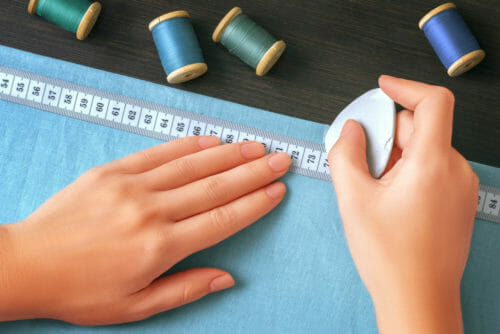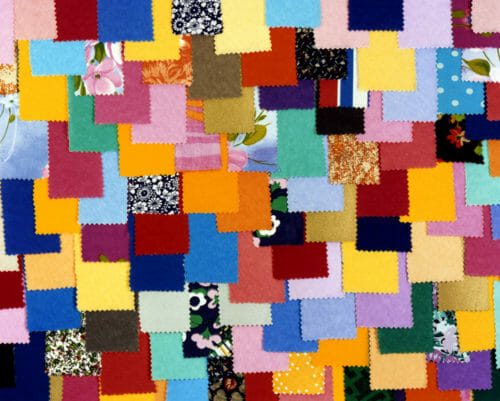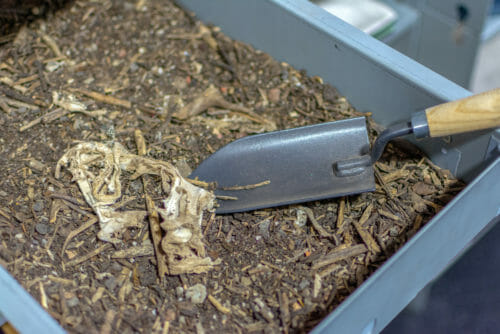Recently we created a list of zero-waste sewing projects that was very well received by our readers. A few people asked for more tips on how to go zero-waste, so we put this list together.
12 Essential Tips For Zero Waste Sewing
People sew for a variety of reasons. Some do so out of need and some do so simply out of interest. But whether it's fixing your worn-out clothes, creating new ones, or altering a piece that doesn't quite fit, we can all agree that reducing your sewing waste is great for both your wallet and the environment.
To follow these tips there are only a few things needed for starters: some needles, a variety of threads, and a pair of scissors. Here's a short list of Essential Sewing Tools for Beginners that you might find helpful.
Sewing helps each of us in many different ways. Learning the most basic of it can save us in certain situations. Whatever reason you may have for starting to sew, you should keep in mind that you can finish your sewing tasks quickly when you have only a small or large amount of extra material that can no longer be used.

Tip #1: Ensure that you have the right measurement before you make your final cut.
Be cautious in doing your measurements. Remember, once you make a cut on your fabric, it can no longer be undone. Make sure that you only cut the fabric after you have the right measurements so as not to put any material into waste.
As the aphorism goes: ” Measure twice, cut once.”
Tip #2: Let patterns serve as your guide.
In sewing, patterns are your best friend. From beginners to professionals we all work with them. Following a well-designed pattern to the letter will ensure you have the least wastage possible. Cutting on the fly and deviating from the pattern can be a big risk and for most sewists, it's simply not worth it.
We are all aware that when the pattern of any fabric has been cut, it can no longer be used for bigger sizes. It would be best then to avoid either trimming and cutting the pieces of pattern on the material or choosing the biggest size to cut them.
Should you decide not to cut any part of the fabric, it is suggested to have the pattern paper folded in its edge or the part you need to cut or trace. This could take a lot of time and effort, so to make it more manageable, it would be best to have the pattern cut at its biggest size. For every piece you need to use, it would help if you try to fold each of the pieces at its edge to create smaller sizes.


Tip #3: Piecing
Piecing was a very common method back when the cost of fabrics was very high. It is the process of breaking into smaller pieces a large piece of fabric to ensure that the parts not needed are not wasted. It likewise involves the process of utilizing the smaller pieces of fabrics in such a way that you maximize the whole material itself since nothing is left for scrap. Piecing ensures that two portions of smaller fabrics are put together to come up with the pattern or shape you need. While piecing is not highly recommended for many kinds of garments, it is handy for projects not used as clothing or display, like lining.
Tip #4: Seam Allowances
Having a lot of scrap material that cannot be used is very common, especially for beginners. This is because of the allowances created when trimming the fabric in an incorrect way. As you learn the proper skills in sewing, you will be able to do the correct way of trimming your fabric so as to not leave a lot of unusable scraps. You don't need to become a professional sewer to maximize the use of your resources for sewing. You will soon realize that the extra remaining edges may actually be used still by hand-sewing them.
Tip #5: Secondhand Fabric
Another helpful tip to save on your sewing fabric is to make use of fabrics from projects you have previously done are no longer used. Purchasing materials for smaller sewing projects from thrift stores is definitely a wise choice to make.
Tips #6: Fabric Stash
We are all aware that purchasing more than what you really need is not a good habit at all. This encourages you to be unaware of the materials put to waste since you have more than enough. Not because the fabrics are on sale, then you are pushed to stock up on them. It is wiser to make a plan for the kind of project you want to be sewn and shop only for those kinds of materials.
For some more ideas on organizing your fabric stash, have a read of this:
Tip #7: New Material
You must be very cautious in selecting the quality of the fabric needed for a new project. Take into consideration certain factors such as the fabric's weave, care guidelines, elasticity, durability, design, and cost. While there may not be a perfect quality for fabric, what is significant is the manner it is produced. Although it may be challenging to select the best kind of fabric, you can pick the right fabric if you consider the purpose for using such fabric and that you handle with proper care the finished project you have come up from it.
Tip #8: Thread
Admit it, most of us are very conscious when choosing the right fabric but thinking about the thread is the very last thing in mind. Yes, it is expected to use the thread you already have than buying a new one. But giving special attention when choosing the kind of thread to use is as essential as selecting the best fabric for your project. Did you know that threads could contain polyesters (mostly in large amounts)? When disposed of, polyesters remain polyesters and will last for a longer period of time than threads with natural fiber. So for future purchases, be conscientious and choose a different fiber, which can be a great help for zero-waste sewing.
Tips #9: Scissors
You can never underestimate how a good pair of scissors can help you benefit from your sewing tasks. Your sewing scissors should be used solely for their purpose and must be taken care of properly to maintain their sharpness. A lot of sewing fabrics are wasted because of dull or poor-quality of scissors. Always choose the best one you can use for the long term.
Tip #10: Save your scraps
Whatever amount or size remains from your fabric, make sure that you have storage to keep them. You will never know when you might need a small piece of fabric, and you can save time and resources when you have your scraps in a single place. You may find it very helpful that these actually recycled materials combined with new materials can last for a valuable length of time. There are several ways to utilize recycled textiles depending on their sizes. Just use your creativity, and you can definitely save a lot.


Tips #11: Composting
Disposal of old materials should be the last option. There are numerous types of textiles that decompose for as long as six months. This process can actually help our environment with the disposal of waste. You just need to clearly identify if the unused textiles you have can indeed be decomposed. If you are unsure, it is best not to proceed. However, you have to keep in mind that composting should always be your last resort.
Tip #12: Pins and Needles
Obviously, specific sewing materials, including pins and needles, cannot be recycled. In cases when they get broken or are impossible to be used, be careful to dispose of them properly. Never leave them attached to your scrapped or recycled fabrics and materials to avoid anybody from being hurt or having an accident.
I hope you enjoyed these essential tips for zero-waste sewing. If you have more ideas on how to practice zero waste while sewing please make sure to leave them in the comments below for the other readers.








I don’t agree with your premise on polyester threads. You are assuming that something sewn with polyester thread will automatically be thrown away. I sew items that I give as gifts so I very much doubt those items will end up in a landfill. I prefer polyester thread because I prewash all my fabric and by using polyester thread I know it will not shrink and distort the item I sewed versus using cotton thread. I still have items from my mom from when she was a child and when I pass away I plan on passing those items down to my sons. That’s just my thought on that matter. I also understand persons who prefer cotton thread because they sew exclusively on cotton and that makes sense to me as well. Gutermman is now making a polyester thread that is made from recycling PET water bottles!
I keep broken, bent, used needles, & razors in a Rx bottle. Once it gets full then I dispose of it. I like using the Rx bottle because it can’t be opened easily by kids.
I organize my scraps by folding them to the size of a folded fat quarter. Then I put them in color order as best I can. I use the ROYGBIV color order. For scraps too small to use I keep them in a bag under my cutting table to be used for stuffing. Even cheap fabric is too expensive to waste and not good for our planet.
I save every scrap of cloth I use – if not big enough for anything else they can be used as stuffing for a pet toy, a draft stopper, or stuffed animal.
Thank you for the very good advice! I always place my patterns in such a way that I save fabric and then I save my scraps.
I hope to make a quilt using the scraps. Someday!